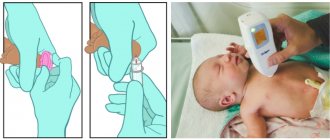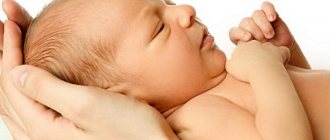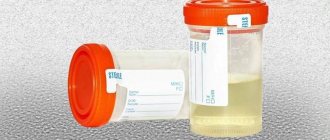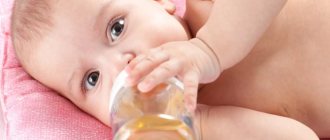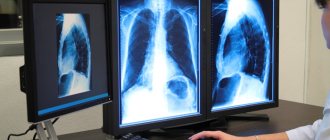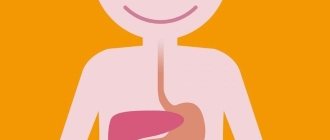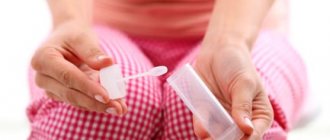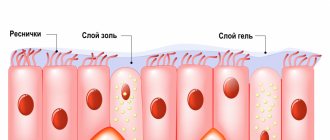What is bilirubin?
Just over half of newborns become noticeably icteric in the first week of life. This infantile jaundice usually goes away in 2-4 weeks. What causes jaundice in children? Jaundice is a yellowing of the skin and whites of the eyes caused by hyperbilirubinemia - that is, an increase in the concentration of bilirubin in the blood serum.
Bilirubin is a yellow-orange natural pigment that is released during the natural breakdown of red blood cells - erythrocytes: as a result of the breakdown of hemoglobin into unconjugated bilirubin. The liver clears the blood of excess bilirubin by filtering it out and converting it from the free form (unconjugated) to the bound form (conjugated with glucuronic acid), which enters the bile and digestive tract, exiting along with the stool, giving it its characteristic color.
Is jaundice in newborns dangerous?
Neonatal jaundice is common among healthy newborns, and most cases are physiological. In adults and a small proportion of newborns, jaundice is pathological, that is, it means the presence of a disorder that causes it. Some of the most common causes of newborn jaundice include:
Physiological:
- Physiological hyperbilirubinemia.
- Breastfeeding jaundice.
- Breast milk jaundice.
Pathological:
- Hyperbilirubinemia due to hemolytic disease.
- Liver dysfunction (eg, caused by parenteral nutrition causing cholestasis, neonatal sepsis, neonatal hepatitis).
Physiological hyperbilirubinemia occurs in almost all newborns. The shorter lifespan of red blood cells in newborns increases bilirubin production, and low levels of bacterial flora in the intestines (which convert bilirubin into an insoluble form)
in combination with increased hydrolysis of conjugated bilirubin, they increase enterohepatic circulation, as a result of which the liver will not be able to cope with excess incoming bilirubin. As a result, bilirubin levels may rise to 308 µmol/L by 3–4 days of life (by 7 days in Asian infants) and then decline.
Breastfeeding jaundice develops in one sixth of infants during the first week of life. Breastfeeding increases the circulation of bilirubin from the intestines to the liver in some infants who do not consume enough milk and who are dehydrated and calorically deficient.
Jaundice from breast milk is different from jaundice from breastfeeding. It develops after the first 5-7 days of life and reaches a peak after about 2 weeks. It is thought to be caused by increased concentrations of beta-glucuronidase in human breast milk, which causes an increase in the conversion of insoluble bilirubin back to the soluble (unconjugated) form and its reabsorption in the colon.
Still have questions?
Get an online consultation from leading pediatricians in St. Petersburg!
A professional and experienced pediatrician will answer your questions.
Medical care for a child without leaving home at a convenient time.
sign up for a consultation
A Skype consultation lasts 45 minutes.
Blood test for bilirubin
The outcome of treatment for any disease largely depends on the accuracy of the diagnosis. Quite often, the doctor has to carry out differentiated diagnostics, analyzing the indicators of laboratory, instrumental and instrumental studies, since different diseases may have similar symptoms.
First of all, the doctor focuses on a biochemical blood test due to the universality of the characteristics of this complex test. Among the basic indicators, one of the most important is the content of bilirubin in the blood, which assesses the functioning of the liver, pancreas and gall bladder. The special significance of the “bilirubin” indicator and its relationship with other blood characteristics will be confirmed by any medical forum with numerous questions on this topic.
Increased bilirubin in the blood - what does it mean?
If the test results indicate an increase in bilirubin in the blood, this may indicate the presence of serious diseases and pathological conditions:
- hereditary or caused by other diseases liver enzyme deficiency;
- liver cirrhosis and hepatitis;
- diseases of the biliary tract and gallbladder;
- hemolytic anemia;
- cancer or metastases to the liver from other organs;
- vitamin deficiency B12;
- injuries with multiple hematomas.
An exception is infant physiological jaundice, which occurs due to the restructuring of the newborn’s body after intrauterine development. In all other cases, it is necessary to determine the exact cause of high bilirubin levels.
It is not always possible to identify the true disease based on one indicator, so the doctor compares the values of different indicators, obtaining more detailed information about the pathological process.
Phototherapy - treatment of jaundice at home.
For phototherapy of newborns, special blue light lamps (photoirradiators) are used. Treatment takes several days, the duration of therapy is determined by a pediatrician. Photoisomerization of bilirubin occurs in the skin, therefore, the larger the body area used for phototherapy, the more effective the treatment process. The lamp is a bath made of harmless plastic, in the base of which blue light lamps are mounted.
We have prepared an article about phototherapy, as well as information on where to rent a device in St. Petersburg: Phototherapy at home - treatment of jaundice
How to distinguish physiological jaundice from pathological?
Jaundice that develops in the first 24-48 hours of life or persists longer than 2 weeks is most likely pathological.
Jaundice that does not appear until 2–3 days of life is most likely physiological.
An exception is pathological jaundice due to Crigler-Najjar syndrome, hypothyroidism or drug exposure, which also manifests itself after 2-3 days. In this case, the bilirubin concentration peaks in the first week, increasing at a rate of up to 86 µmol/L per day, and may persist for a long period.
Bilirubin and acute and chronic liver failure (hepatargia)
Liver failure occurs with pronounced changes in the liver parenchyma (fibrous, dystrophic or necrotic). Depending on the speed of occurrence, acute and chronic forms are distinguished.
With hepatargia, the detoxification function of the liver sharply decreases, due to which endotoxins, which should have been eliminated, penetrate into the blood and cause poisoning of the body. In the blood, direct and total bilirubin increases to critical levels (260–350 µmol/l), which causes damage to the central nervous system. The mortality rate is 50–80%. Liver failure can be acute or chronic. The degree of danger is determined through tests for bilirubin.
Causes of hepatargia
- The condition is often a consequence of the development of viral hepatitis and liver cirrhosis. In this case, the presence of slowly progressive hepatargia is characteristic. Hepatitis and cirrhosis can be asymptomatic for a long time, and the norm of direct bilirubin in the blood may not be exceeded for a long time;
- Sometimes the cause is infection of a person with Epstein-Barr viruses, herpes, adenovirus, etc. When a woman is infected with cytomegalovirus, intrauterine infection of the fetus occurs and its death. In this case, total bilirubin is increased during pregnancy.
- The most common cause of this condition is exposure to poisons and medications. In some cases, poisoning occurs due to the use of drugs in the wrong dosage, and sometimes it is a consequence of a failed suicide. In this case, the process develops acutely and is accompanied by nausea, vomiting, hemorrhagic syndrome, “hepatic” bad breath, neuropsychiatric disorders, and increased total bilirubin in the blood.
- Very often this condition is associated with the presence of malignant tumors in the body. Both the main focus and metastasis to this organ can be observed in the liver. In cancer, symptoms increase gradually, accompanied by severe jaundice, nausea, vomiting and cachexia. At the beginning of the development of the tumor process, there may be a normal level of bilirubin - 7-18%, but gradually its concentration in the blood increases and it begins to exceed the norm by 10-15 times.
- Another cause of liver failure is alcohol and drug abuse. In this case, the process can proceed either quickly or slowly, it all depends on the specific version of the “predilection”. However, over time, the increased bilirubin still exceeds the norm many times over.
Symptoms of hepatargia
With this pathology, they gradually increase; jaundice, edema, weight loss, fever, telangiectasia, and dull abdominal pain. “Liver signs” appear on the body: palmar erythema, hemorrhages, Chistovich’s stars, varicose veins of the abdomen in the form of a “jellyfish head”.
Later they are joined by: severe bad breath, neurosis, apathy, and unstable emotional state. Slurred speech, writing problems, finger tremors, and poor coordination may occur. A general blood test and biochemistry show significant deviations from the norm.
With further progression of failure, hepatic coma occurs. Its precursors are: drowsiness, lethargy, rigidity of skeletal muscles, confusion, muscle twitching, convulsions, uncontrolled urination. Very high levels of liver tests are observed in the blood. A general blood test for bilirubin can show up to 500 µmol/l. Patients fall into a coma and die.
In order not to become victims of this disease, you need to take care of your liver, monitor your health, periodically get tested, and if the biochemistry is “bad” and total bilirubin is increased, the reasons for this phenomenon need to be found out. You should not self-medicate, because only a doctor knows exactly what bilirubin and other blood parameters should be.
Diagnosis of jaundice in children
The diagnosis of hyperbilirubinemia is suspected by the color of the infant's skin and whites of the eyes and confirmed by measuring serum bilirubin.
The level of serum bilirubin required to cause jaundice varies depending on skin tone and body area, but jaundice usually becomes visible on the whites of the eyes when higher than normal and concentrations range from 34 to 51 µmol/L, and on the face from approximately 68 to 86 µmol/l. As bilirubin levels increase, jaundice progresses from the head to the feet, appearing in the umbilicus at approximately 258 µmol/L and in the legs at 340 µmol/L.
Bilirubin concentration > 170 µmol/L in preterm infants or > 308 µmol/L in full-term infants requires additional tests: hematocrit, blood smear, reticulocyte count assessment, direct Coombs test, total serum bilirubin and serum direct bilirubin concentration, blood group and Rh comparison -baby and mother factors.
Urine tests for bilirubin: bilirubinuria
In healthy people, the urine of the bile pigment bilirubin may be contained in small quantities and is not determined by standard laboratory methods. Therefore, the norm of bilirubin in urine is
is the absence of bile pigment.
Increased bilirubin in urine
In various diseases, direct and indirect bilirubin fractions can be detected in urine samples. This condition is called bilirubinuria.
Indirect bilirubin appears if its content in the blood significantly exceeds the norm and at the same time the permeability of the glomerular membrane is increased. This occurs in the following diseases:
- glomerulonephritis of various etiologies.
- Ga nephropathy (Berger disease)
- systemic lupus erythematosus;
- Henoch-Schönlein purple
- periarteritis nodosa;
- hemolytic-uremic syndrome (HUS);
- idiopathic thrombocytopenic purpura (ITP).
The cause of increased direct bilirubin in urine is jaundice. A positive reaction is detected already in cases where the bilirubin content in the blood is within 30–
34 µmol/l. This indicates a violation of the excretion of bile into the duodenum and an excess of bilirubin in the plasma in adults and children. If the general blood test for bilirubin is normal, there will be no this pigment in the urine.
The presence and absence of this bile pigment in urine in various forms of hepatitis is shown in the table:
| Type of jaundice | Try |
| Normal (healthy person) | Negative |
| Hemolytic | Negative |
| Parenchymatous, at the onset of the disease | Weakly positive |
| Parenchymatous, at the height of the disease | Strongly positive |
| Parenchymatous, in the recovery stage | Weakly positive |
| Obstructive | Positive |
How are tests done for bilirubinuria?
To determine bilirubin in urine, special tests are performed:
Gmelin's test (Rosenbach's modification) is carried out as follows: add 1-2 drops of acetic acid to 100–150 ml of urine and filter the solution several times through a paper filter. After this, the wet filter is left on the Petri dish to dry, after which a drop of a mixture of nitrous and nitric acids is applied to its surface. Increased bilirubin in the urine causes the paper to stain in the form of multi-colored concentric rings, including green, blue, purple, red on the outside and yellow in the center. Without the presence of a green ring, the sample is considered negative.
Rosin's test is carried out by adding a few drops of a 1% alcohol solution of iodine or Lugol's solution to 9–10 ml of urine taken for research. If there are bilirubin fractions in the sample, a persistent, noticeable green ring forms at the liquid interface.
To determine the amount of direct bilirubin fraction, a screening test on standard strips is also used. The level of content of this pigment is determined after applying urine to it and assessing the resulting color using the attached scale.
Testing your urine for the presence of this liver enzyme provides excellent opportunities to:
- for early detection of hepatitis and differential diagnosis of various types of jaundice;
- to determine the effectiveness of treatment in the treatment of many liver diseases;
- in the diagnosis of kidney pathologies accompanied by an increase in the permeability of the glomerular membrane;
- to monitor the presence of pigment in urine during pregnancy and preventive examination of persons working with harmful substances;
- as a quick test for liver condition in patients taking drugs that can cause liver dysfunction.
Urine tests for bilirubin are very simple, but quite informative.
Is physiological jaundice dangerous in infants?
Although the increase in bilirubin concentration in physiological jaundice is not caused by disease and goes away over time, hyperbilirubinemia is neurotoxic, that is, it causes damage to nerve cells in the child. For example, high concentrations of bilirubin in the blood can cause acute encephalopathy, accompanied by a variety of neurological disorders, including cerebral palsy and sensorimotor impairment. An even more severe consequence of the neurotoxicity of elevated bilirubin concentrations may be kernicterus, caused by the deposition of free (unconjugated) bilirubin in the basal ganglia and nuclei of the brain stem. Typically, bilirubin bound to serum albumin remains in the intravascular space, but sometimes it can cross the blood-brain barrier:
- With a high concentration of bilirubin in the serum (acute or chronic).
- When the concentration of serum albumin decreases (for example, in premature infants).
- When bilirubin is displaced from albumin by competitive binders (drugs:
- sulfisoxazole, ceftriaxone, aspirin) or free fatty acids and hydrogen ions (for example, in malnourished and starving children).
For neonates born at less than 35 weeks' gestation, the threshold bilirubin levels for treatment are lower because preterm infants are at greater risk of neurotoxicity.
What is bilirubin, meaning
The content of the article
The bilirubin molecule consists of 4 pyrrole rings connected to each other. The molecular weight of the molecule is 548.68. Pure bilirubin is a sparingly soluble crystalline substance.
Being a breakdown product of red blood cells, bilirubin is toxic. Its indirect form is constantly formed in tissues and blood and is not excreted from the body. The liver processes the toxic substance and converts it into a direct form that is soluble in water. The direct form is excreted in feces or urine, turning them brown.
Of great importance in diagnosis is the study of the relationship between bilirubin levels in the blood, urine and feces. Even if a blood test shows total bilirubin is normal, but the absolute values and the ratio of pigment fractions have deviations, a differential diagnosis of the disease should be made.
The sum of the fractions can give an overall normal value of total bilirubin, but it often happens that primary bilirubin is elevated and conjugated bilirubin is below normal. This fractional ratio is observed in the initial forms of liver enzyme deficiency and the threat of excessive accumulation of toxic indirect bilirubin in the tissues.
